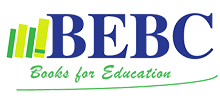Title: Practical English Usage Third Edition
Publisher: Oxford University Press
Author: Michael Swan
Reviewer: Alex Warren, Academic Director from British Study Centres, Bournemouth
Overall rating: 
Is Practical English Usage an exhaustive grammar book? No, but neither does it pretend to be. Rather it reveals, dissects and explains the trickier and most confusing language points (some might call them the ‘finer points’) of the English language; and with over 600 entries (634 to be precise) Practical English Usage covers, if not all, then the large majority of them. In this respect is doesn’t just deal with grammar issues, though naturally grammar does take up the majority of entries. Common problems with vocabulary, pronunciation, spelling (specifically points 556-565) as well as more general areas of English - including kinds of English (308-312), the grammar and vocabulary of headlines (240), slang (533), taboo words (575), social language (545) and correspondence (146-147) – are also addressed to varying degrees. In this respect it’s a one stop shop for all those niggling, annoying, confusing irregularities and peculiarities of the English language.
Where Practical English Usage excels is with just how user-friendly it is. Alphabetically organised, it’s very much a case of pick up the book, find the entry you need and off you go. Alternatively, and for more specific items, there’s always the index. In any case, once you’ve found your bête noir of a grammar (or vocabulary) point the explanation is presented in a very clear and easily-digestible fashion. As the book’s title suggests the focus is very much on usage as opposed to form and it takes the reader step by step through the subtleties of the chosen area. Take for example the often murky waters of the future and which form to use and when. Set out across 11 sections (211-221), first of all it looks at the different grammatical forms possible as part of an introduction then explores each one and its specific uses in detail, complete with examples. Often words and grammar points are interlinked and these are well signposted in the entries, with the user pointed in the direction of related items. All in all, it’s very thorough and importantly, easy to navigate. There’s still a huge amount of information, but it is after all a reference book.
With that in mind, although the book is aimed at higher level learners and teachers alike, in reality it is more likely to be found in the confines of a staffroom than on a student’s desk. The reason for this is simple. It is a reference book and so there are no practice activities allowing students to see the differences ‘in action’. Ultimately this is what students need and want to help clarify the often subtle differences that are the source of their initial problems. On the other hand it should be seen as an integral book for any staffroom reference library, giving excellent and clear analysis for teachers, especially those who are new to the ELT classroom. Not only that, but by its very nature it gives teachers an insight into the learners’ mind and what they are likely to struggle with in class, thus allowing the conscientious teacher to anticipate the learners’ problems and to try to address them before they become such. Indeed there are many pearls of wisdom to be found and as such Practical English Usage should be regarded as a real treasure.
|
Overall rating |
4.5 |
